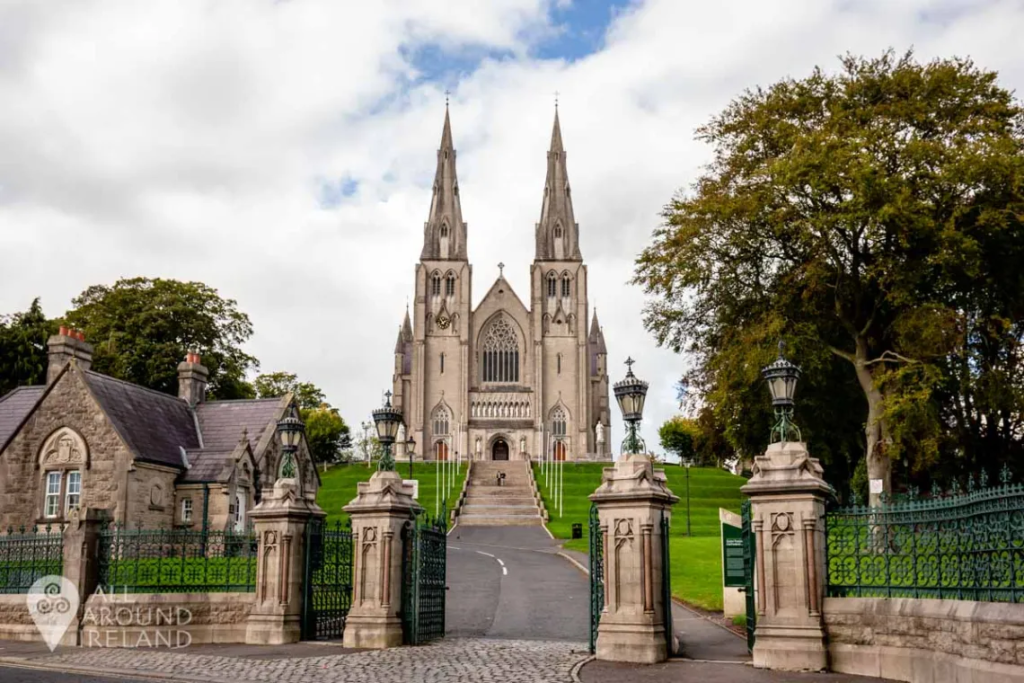Nestled in the heart of Northern Ireland, Armagh I is more than just a city—it’s a profound testament to Ireland’s rich history, spiritual legacy, and unique architectural charm. Known as the “City of Saints and Scholars,” Armagh I has long been recognized as a hub of religious significance, historical landmarks, and cultural wonders. With its deeply rooted Christian heritage, stunning architectural feats, and a vibrant contemporary scene, Armagh I is truly one of Northern Ireland’s crown jewels.
The Spiritual Heart of Ireland
Christian Heritage and the Legacy of St. Patrick
Armagh I holds an unrivaled place in Ireland’s religious history, and this is largely due to its association with St. Patrick, Ireland’s patron saint. In the 5th century, St. Patrick established Armagh I as the ecclesiastical capital of Ireland. He built his first stone church on the hill where the present-day St. Patrick’s Cathedral now stands, marking the city as a spiritual center for Irish Christianity.
This religious foundation has persisted for over 1,500 years, with Armagh I remaining the seat of both the Protestant Church of Ireland and the Roman Catholic Church in Ireland. It is unique in being home to two St. Patrick’s Cathedrals—each serving as a vital spiritual and cultural landmark for their respective denominations.
St. Patrick’s Church of Ireland Cathedral
One of the most iconic structures in Armagh I is St. Patrick’s Church of Ireland Cathedral, sitting on the hill where St. Patrick established his first church. The cathedral is not only a symbol of spiritual importance but also an architectural masterpiece. Built in the 13th century and extensively restored in the 19th century, it boasts intricate Gothic design elements, including towering spires, ornate stonework, and beautiful stained-glass windows.
St. Patrick’s Roman Catholic Cathedral
Further enhancing Armagh I’s religious significance is St. Patrick’s Roman Catholic Cathedral, which dominates the skyline from another prominent hill. This neo-Gothic cathedral, completed in 1904, is a marvel of architecture, with twin spires that stand as symbols of faith. Inside, the cathedral’s elaborate interior is adorned with mosaics, marble, and stained glass, making it one of the most beautiful churches in Ireland.
A Rich Historical Legacy

Armagh I’s Role as Ireland’s Ancient Capital
Beyond its spiritual importance, Armagh I is also deeply embedded in Irish history. The city served as a political and cultural capital in ancient Ireland. It was home to Irish kings Armagh City and a seat of learning that attracted scholars from across Europe. Its ancient structures and landmarks are reminders of a time when Armagh I was a center of knowledge and governance.
Navan Fort: A Window to Pre-Christian Ireland
Just outside Armagh I lies Navan Fort (Emain Macha), one of the most significant archaeological sites in Ireland. This ancient royal site dates back over 2,000 years and was once the seat of the Ulster kings. Navan Fort holds immense mythological importance as well, being the legendary capital of the Ulster cycle in Irish mythology. Visitors today can walk the ancient grounds and imagine the grandeur and significance of this site in Ireland’s ancient past.
Armagh Public Library and Observatory
Continuing its legacy as a center of learning, Armagh I is home to the Armagh Public Library, founded in 1771, and one of the oldest libraries in Northern Ireland. The library contains a treasure trove of rare books, historical documents, and religious manuscripts, offering a glimpse into Ireland’s intellectual history.
The Armagh Observatory, founded in 1790, remains an active research institution and a symbol of the city’s commitment to science and learning. It also contributes to Armagh I’s unique blend of history, science, and spirituality, creating a rich, multifaceted identity.
Unique Architectural Beauty

Georgian Armagh I: A City of Classical Elegance
While Armagh I is renowned for its cathedrals, the city’s architectural beauty extends beyond these religious landmarks. Armagh I boasts some of the finest Georgian architecture in Ireland. During the 18th century, Archbishop Richard Robinson initiated an ambitious plan to transform the city into a hub of classical elegance. Today, visitors can stroll through streets lined with Georgian buildings, offering a glimpse into the architectural trends of the time.
The Mall: A Georgian Gem
At the heart of the city lies The Mall, a large tree-lined public space surrounded by Georgian houses, creating a picturesque setting. The Mall epitomizes Armagh I’s architectural charm and serves as a gathering place for events, festivals, and leisurely strolls. Walking along its paths, visitors are immersed in the city’s unique blend of natural beauty and architectural grandeur.
Palace Demesne: A Regal Escape
The Palace Demesne, once the residence of the Archbishops of Armagh, is another striking example of Armagh I’s architectural beauty. Set within 300 acres of stunning parkland, the Palace’s Georgian design complements the natural surroundings. Today, it serves as a public park, where visitors can explore its landscaped gardens, woodland trails, and historical features.
Armagh I Today: A Vibrant Cultural Hub

Events and Festivals Celebrating the City’s Legacy
Armagh I continues to thrive as a cultural and spiritual center. The city hosts numerous events and festivals throughout the year, celebrating its rich heritage and vibrant community. One of the most notable is the St. Patrick’s Festival, which draws visitors from around the world to experience Armagh I’s unique blend of religious and cultural traditions.
The Market Place Theatre and Arts Centre
For those seeking contemporary culture, Armagh I offers the Market Place Theatre and Arts Centre, a dynamic venue for theatre, music, and the visual arts. This modern cultural space enhances the city’s reputation as a hub of creativity, drawing performers and audiences alike to its diverse programming.
Conclusion
Armagh I is a city where history, spirituality, and architectural beauty converge. From its ancient roots as a seat of learning and power to its modern-day role as Northern Ireland’s spiritual heart, Armagh I stands as a beacon of Ireland’s rich cultural and religious legacy. Whether you are drawn by its stunning cathedrals, Georgian architecture, or historical landmarks, Armagh I offers an experience that transcends time, leaving a lasting impression on all who visit.
FAQs
1. Why is Armagh I considered the spiritual capital of Ireland?
Armagh I is regarded as the spiritual capital due to its historical association with St. Patrick, who established it as the ecclesiastical center of Ireland in the 5th century. It is home to two St. Patrick’s Cathedrals, representing both the Catholic and Protestant traditions.
2. What are the key historical landmarks in Armagh I?
Key landmarks include St. Patrick’s Church of Ireland Cathedral, St. Patrick’s Roman Catholic Cathedral, Navan Fort, the Armagh Public Library, and the Armagh Observatory.
3. What architectural styles are prominent in Armagh I?
Armagh I is known for its Gothic cathedrals and elegant Georgian architecture, notably seen in The Mall and Palace Demesne.
4. What is Navan Fort, and why is it significant?
Navan Fort is an ancient royal site dating back over 2,000 years. It was the seat of the Ulster kings and holds significant mythological and historical importance in Irish culture.
5. Are there any festivals held in Armagh I?
Yes, Armagh I hosts several festivals, including the St. Patrick’s Festival, which celebrates the city’s spiritual and cultural heritage with events, parades, and activities for all ages.
Read More About: Armagh I
Read More: How Reuters is Adapting to the Changing Landscape of Journalism





























































